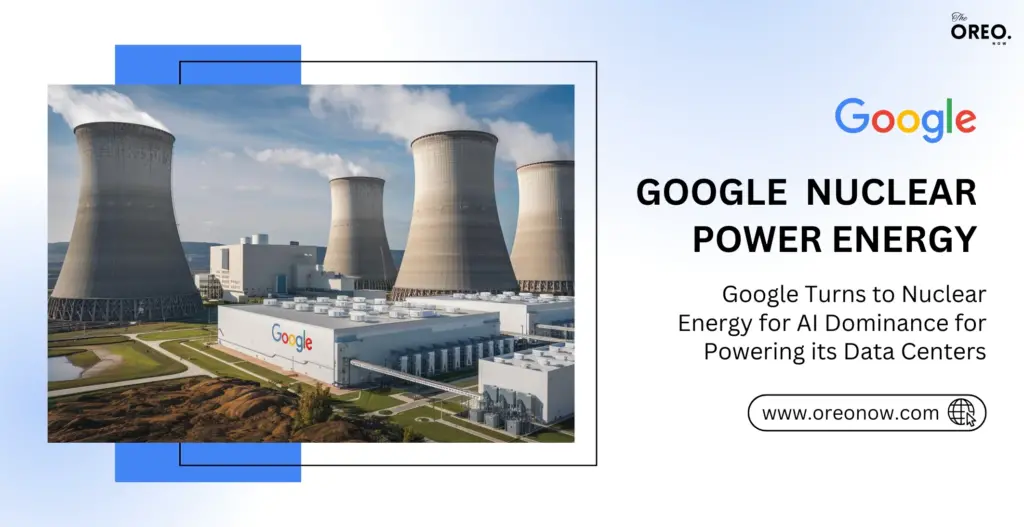Google Turns to Nuclear Energy for AI Dominance for Powering its Data Centers

Google is considering Nuclear Energy for AI data centers as its potential source. Since the computational demands of AI are increasing, such as large language models and other deep learning applications, it will also require substantial energy. Nuclear power will be helpful since it offers a high-density, reliable and carbon-neutral energy source that could help meet growing needs.
Why is Google considering Nuclear Power?
High Energy Demand: AI language models and other deep learning applications, require immense computational power, translating to significant energy consumption.
Carbon Neutrality: Google has ambitious sustainability goals, including achieving net-zero emissions across its operations by 2030. Nuclear power is a low-carbon energy source that can contribute significantly to this target.
Reliability: Nuclear power plants provide a consistent and reliable energy supply, essential for the uninterrupted operation of critical infrastructure like data centers.
Scale: Nuclear power can generate large amounts of electricity, making it suitable for powering large-scale data centers.
Benefits of Nuclear Energy for AI Data Centers
- High Energy Output: Nuclear power plants can generate large amounts of electricity, making them suitable for powering energy-intensive AI data centers.
- Low Carbon Emissions: Nuclear power is a low-carbon energy source, which aligns with Google’s sustainability goals and helps reduce greenhouse gas emissions.
- Reliability: Nuclear power plants provide a stable and reliable energy supply, essential for the uninterrupted operation of critical infrastructure like data centers.
- Scale: Nuclear power can be scaled to meet the growing energy demands of AI, as data centers continue to expand and become more computationally intensive.
Challenges of Nuclear Energy for AI Data Centers
- Safety Concerns: Nuclear power plants have a history of safety concerns, including accidents and the potential for radioactive leaks. Addressing these concerns is crucial for public acceptance and regulatory approval.
- Nuclear Waste Management: The safe disposal of nuclear waste is a long-standing challenge. Developing effective and sustainable waste management solutions is essential for the long-term viability of nuclear power.
- High Upfront Costs: Building and operating nuclear power plants requires significant upfront investments. These costs can be a barrier to entry for companies considering nuclear power.
- Regulatory Hurdles: The regulatory process for nuclear power plants can be complex and time-consuming. Navigating these regulatory hurdles can be challenging and may delay project timelines.
- Public Perception: Nuclear power often faces negative public perception due to safety concerns and historical accidents. Addressing these concerns and building public trust is essential for the successful implementation of nuclear power projects.
As Google weighs the potential benefits and risks of nuclear power, it will need to carefully consider its long-term strategy. The company may ultimately choose to combine nuclear power with renewable energy sources to create a more balanced and sustainable energy mix.
Whatever path Google chooses, its exploration of nuclear power is a significant development. It highlights the increasing urgency of finding sustainable and reliable energy solutions to power the growing demands of AI and other emerging technologies.
Also Read: Microsoft Powers Up Three Mile Island Nuclear Power Plant



